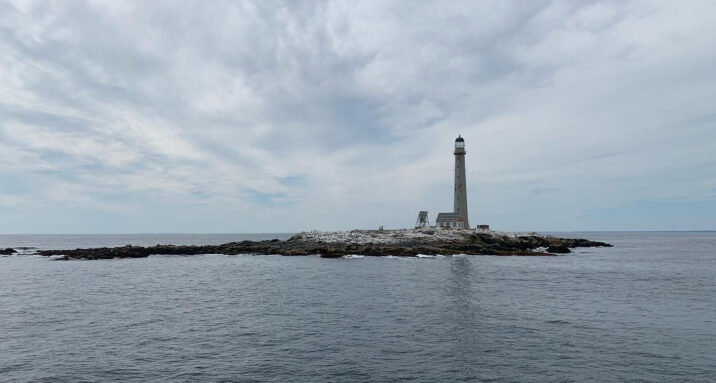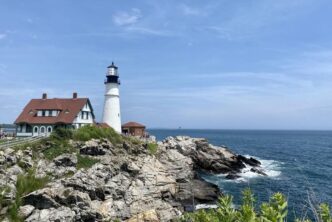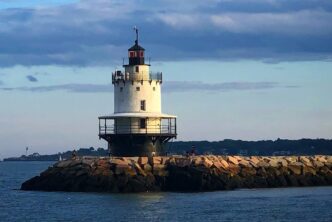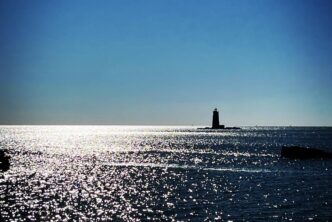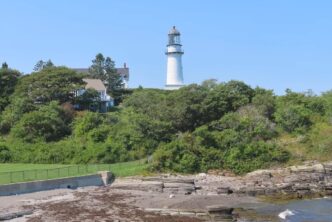The Boon Island Light Tower is the highest of its kind along the coast of Maine, standing at 133 feet. Situated between the remains of the old keeper’s house and a contemporary generator shed, the attractive granite tower rises sharply and formidably. Its beauty is beyond doubt and its role in the region’s maritime history is equally fascinating.
History of Boon Island Lighthouse
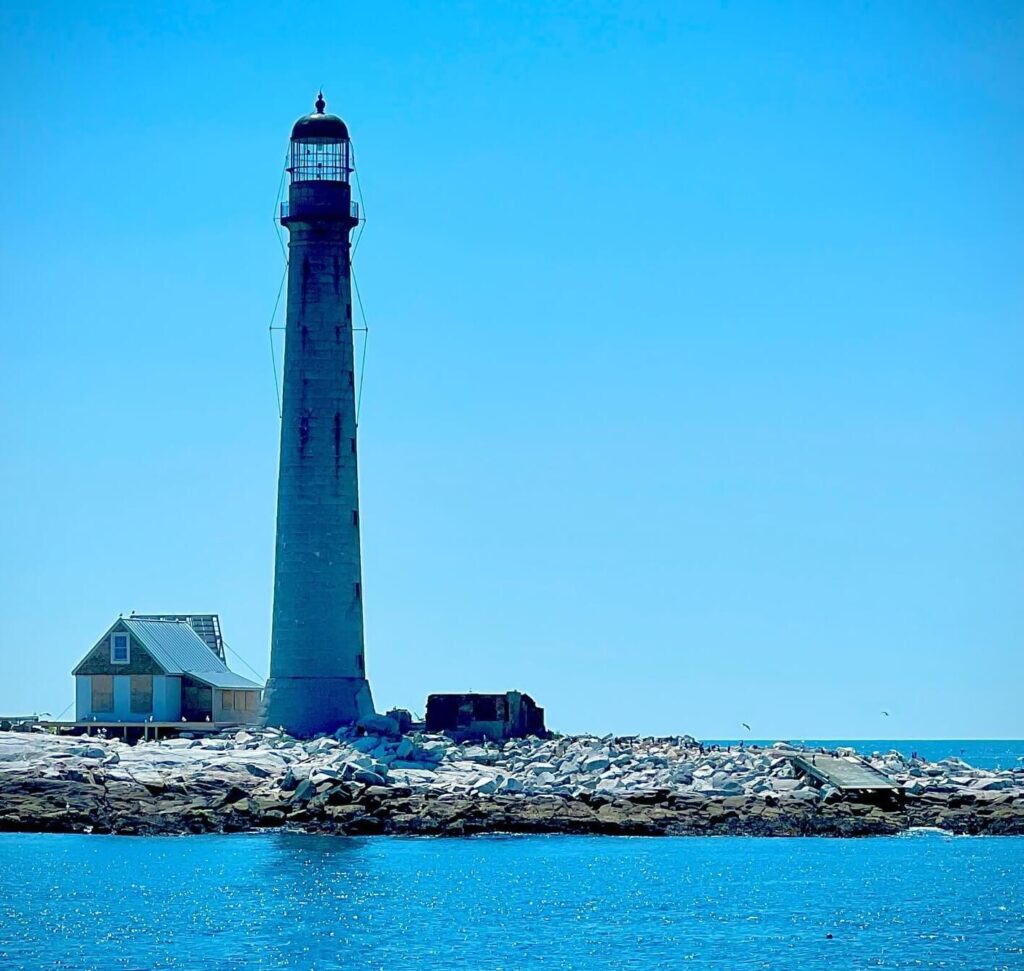
The 1855 tower is made of ashlar granite and has two vertical rows of seven windows on each side of it. The shaft of the tower is supported by a large conical base and rises to a sizable molded band that is positioned under the projecting parapet. The lantern is carried on a tall granite shaft that is framed by this little parapet.
The lantern’s contemporary beacon is covered by a dome. The spiral staircase that leads to a door at the parapet is housed within the tower. In the late 1880s, the tower’s structural integrity was undermined but subsequently improved as a result of a particularly bad storm the season before.
This included installing steel bars in the gallery and upper shaft portion. This little rock island, which is about seven miles off the coast of Maine, is dominated by the Boon Island Light Station. It is the southernmost of the seacoast lights and, as previously mentioned, possesses the highest light tower in Maine.
The seventh-oldest station in Maine, Boon Island Light Station was originally built during the War of 1812. However, prior efforts had been made to construct small buildings on the island.
Boon Island was one of just six principal seacoast stations in Maine in 1861 when a complete taxonomy of lights was introduced in the 1850s. These stations, which were dispersed widely along the coast, served as an essential navigational assistance along the main trade channels connecting Maine to Europe and other ports in the United States.
The Coast Guard automated this station in the 1970s, after which several of its structures were taken down. The current granite tower was erected to replace the first tower, which was damaged in 1831, rebuilt, and eventually demolished.
Boon Island Lighthouse has seen numerous iterations and rebuilds. The current 133-foot imposing granite tower was first constructed in 1855. It is situated on a rocky island around seven miles from shore and is the southernmost of the seacoast lights.
Planning Your Visit
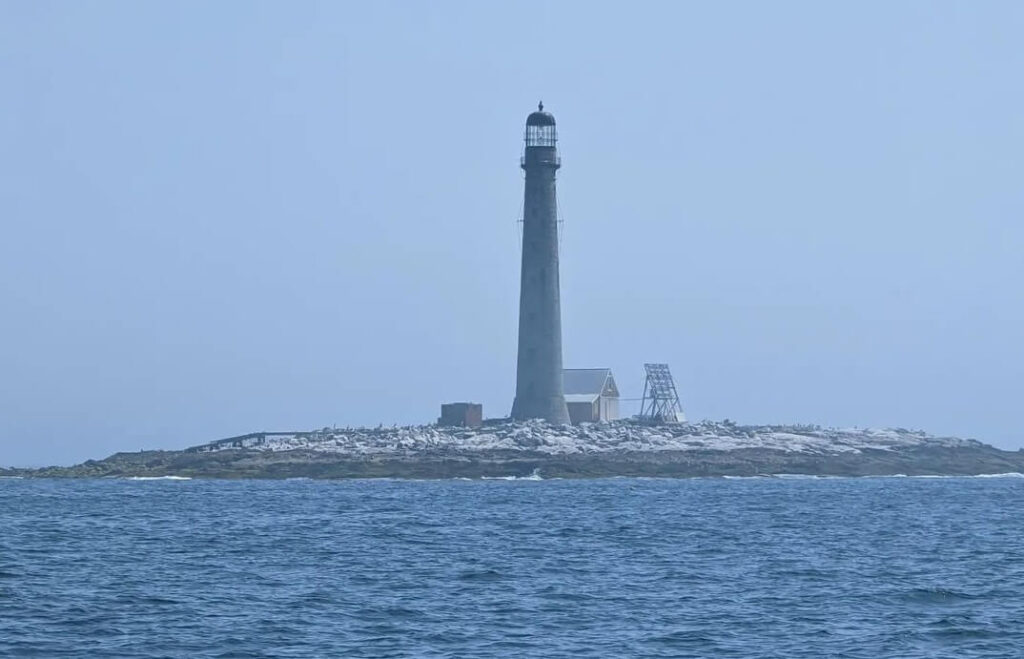
One of the most remote lighthouses in Maine, Boon Island Light was built to serve a particularly treacherous area for seafaring. Although storms swept away both the old tower and the tower that replaced it, the third granite tower is still standing for skyline viewing despite suffering severe damage in storms (particularly in the severe winter of 1978).
The light went under the hammer for private bidding in 2014 and sold for almost $80,000 to a real estate investor, who then sold it to a philanthropist and maritime enthusiast. Although efforts have been made to repair the tower and structures, the island is still not open to the public.
Optimal mainland viewing, although from a distance, can be enjoyed from a few prime spots:
- Long Sands Beach (off Long Beach Av., York, ME)
- Sohier Park / Cape Neddick (home of Nubble Lighthouse, York, ME)
For a closer look, committed enthusiasts may consider embarking on a boat journey. Your best bet is to explore this list of charter boats that are available for hire. The list is maintained by the Maine state government. However, keep in mind that charters departing from Rye or Portsmouth, both in New Hampshire, are typically the best option.
If you opt for a view from the mainland only you’ll want to take exit 4 off of I-95 west of York and go east to Route 1. Turn east on Nubble Road after traveling north. Taking the opportunity to see both Boon Island Light and Cape Neddick (Nubble) Light, use Nubble Road to Sohier Park.
Further information can be gleaned from the American Lighthouse Foundation at (207) 646-0245 or PO Box 889 in Wells, Maine.
Today’s Boon Island Light is the third main iteration of the tower. Previous efforts suffered major damage in storms. The lighthouse is privately owned and not accessible to the public. Great views can be enjoyed from Sohier Park (home of Nubble Light). Charter boats are an alternative option for enthusiasts.
Interesting Facts
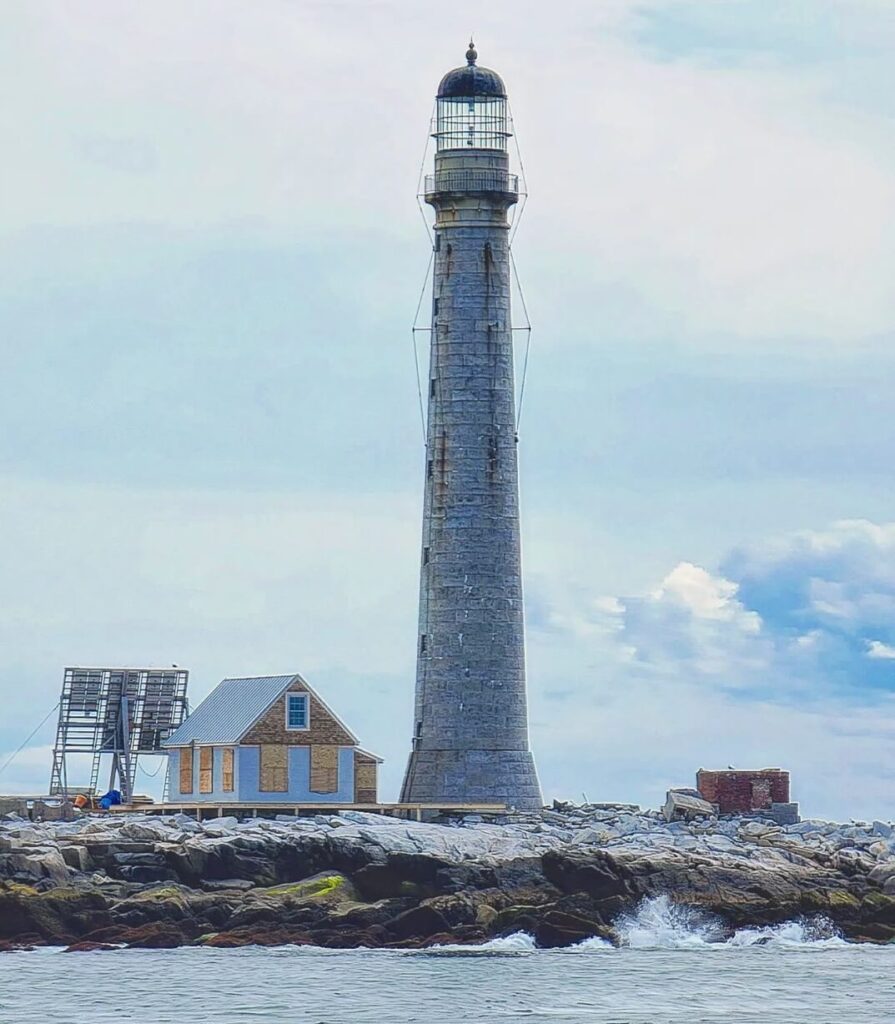
Boon Island is where the notorious Nottingham Galley shipwreck in 1710 took place. Captain John Deanne and his crew were stranded when the British commercial ship went aground. Before being rescued, the crew resorted to cannibalism after the unfortunate collision with a rocky outcrop. The spirits of the dead are claimed to still roam the island.
The ironically christened “Boon” Island has a dismal past, and this is only one of the reasons the idea of a Boon Island Light Tower were being seriously considered by 1779.
Boon Island, not much more than a flat, 700-foot-long rock protrusion approximately 7 miles off the coast of York, was at the mercy of Mother Nature’s whims. The 1799-built original tower washed off the flat, uninhabited island in 1804 and wasn’t rebuilt until 1811, when a 25-foot building was erected in its stead.
That building was also swept away in 1831, and its replacement was so modest that it scarcely stood out. The present-day 133-foot-tall granite tower was constructed in 1855.
Storms continued to do severe damage to the lighthouse and its occupants in following years. One keepers’ young wife accompanied him on his mission in the middle of the 19th century.
The keeper became sick one stormy night, and the young lady stood watch at his side, only stopping to keep the tower lit since she knew lives relied on it. She lost her strength after learning the sad news that her husband had passed away, and a few days later, she was allegedly discovered roaming and insane.
During the 1978 blizzard, there were two lightkeepers on duty at the lighthouse. The only place left for the men to seek cover was the lantern room after the keeper’s quarters, supply building, and boat house were all blown off the island during the storm. The light was automated after the heroic staff were rescued the next day so that no more lives would be at risk.
Boon Island Light, which once had a second-order Fresnel lens, now has a VEGA VRB-25 automated solar optic that shines 137 feet above sea level, flashes white every five seconds, and can be seen for 19 miles.
Boon Island has a colorful history of shipwrecks and severe weather events. The lighthouse was automated in 1978 after a particularly severe blizzard. It houses a VEGA VRB-25 solar optic.
Key Information
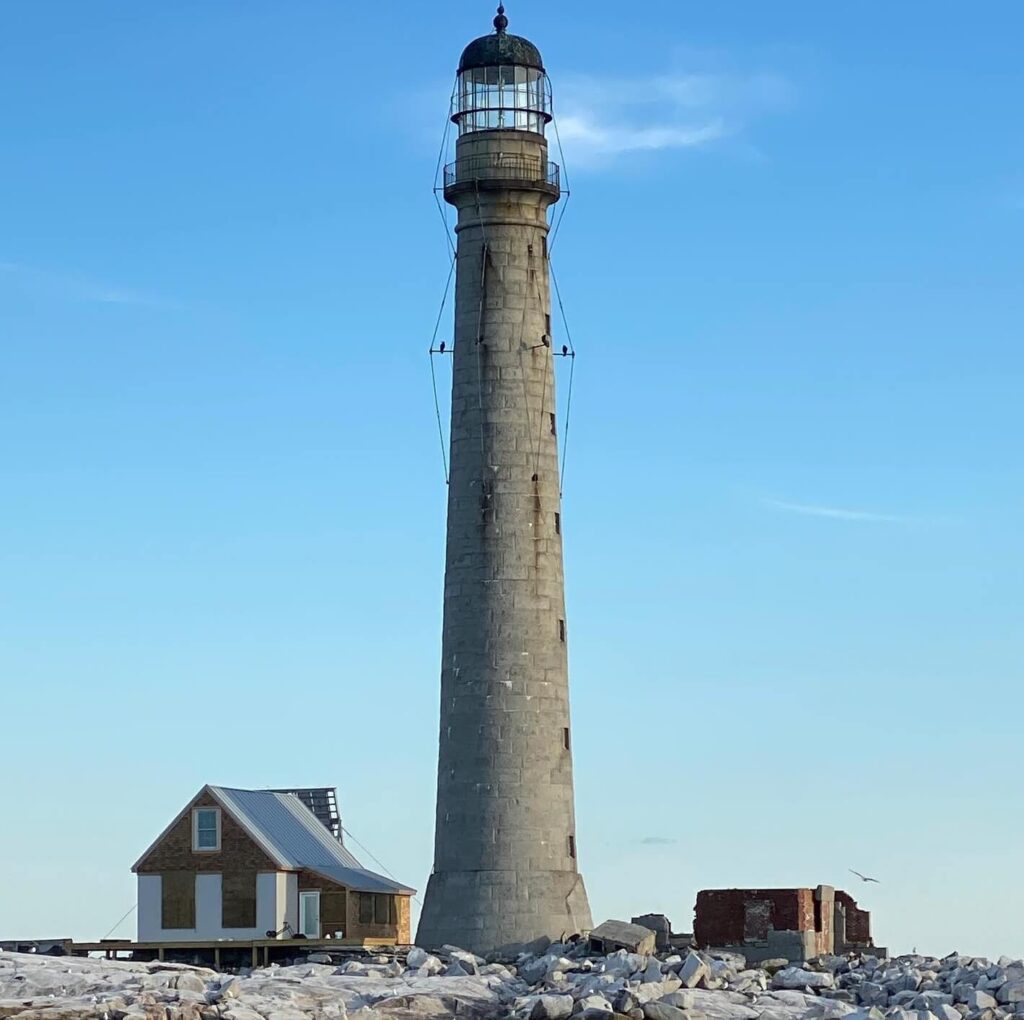
| Location | Near York, ME (43° 07′ 18 “N, 70° 28′ 36 “W) |
| Established | 1811 (rebuilt numerous times) |
| Height | 133 feet (137 feet above sea level) |
| Type | Conical tower |
| Construction | Granite |
| Architect | Seward Merill (1833 rebuild) & US Army Corps of Engineers (1855) |
| Sequence | White light (ON – 5 seconds, OFF – 5 seconds) |
| Fog Horn | 1 sound every 10 seconds |
FAQ
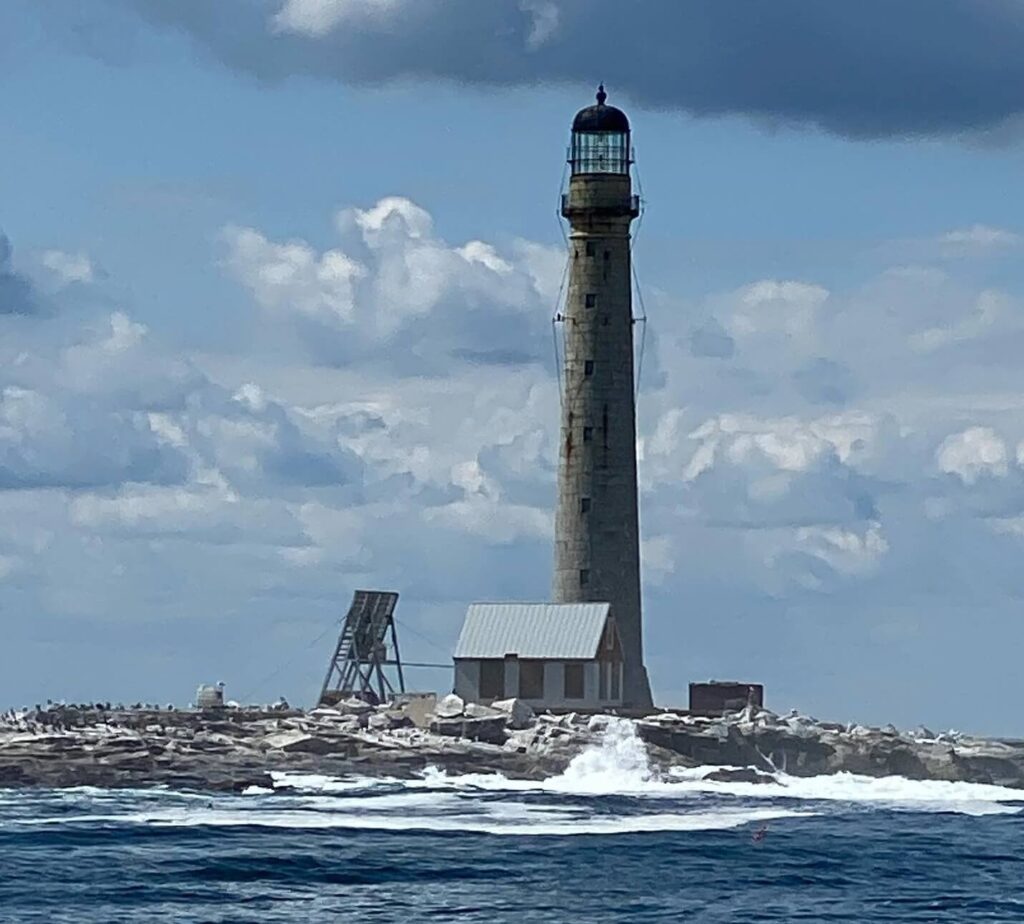
Where is the best place to park?
After entering Sohier Park from Nubble Road you will reach the parking area of Nubble Light. It has capacity for 60 vehicles and is open from mid-April through mid-October. Severe weather can and sometimes does force its closure during these months. For those unafraid of a short walk to your destination, there are parking options in Cape Neddick and York Beach.
Where is the best place to view and photograph the lighthouse?
Views from the shore can still be stunning in spite of the significant distance. Generally, Long Sands Beach and Nubble Lighthouse are the best viewing options. Alternatively, a boat can be chartered for close up viewing. Nubble Lighthouse sporadically maintains a number of webcams for online viewing.
What other facilities and services are available?
Nubble Lighthouse can be booked as a quite stunning wedding venue. The team also maintain a gift shop, open all day from May through October. Scuba diving is a great activity for the summer months in this area. Restrooms and a water fountain are also available.
Fishing enthusiasts will also find opportunities to indulge and dogs are welcome (leashed). Local fauna include numerous Gull species, Harbor Seals, and Double Crested Cormorants.
What are the best dining and accommodation options nearby?
Gateway to Maine is a website maintained by the York Chamber of Commerce and is packed with information on events and local lodging/dining options. Fox’s Lobster House is the most famous and nearby choice, situated right by Sohier Park. It is housed inside a quaint, pretty blue building. Cape Neddick is home to several pleasant guesthouses including Lynwood Inn and The Lighthouse Inn & Carriage House.

